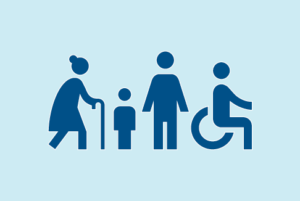On May 13, Gov. Newsom released the May Revision with modifications to the proposed state budget he first presented in January. Tax revenue estimates have surged by $55 billion since the governor’s January budget proposal, creating a discretionary budgetary surplus of $49 billion and allowing the state to make new investments beyond what was proposed in January.
However, to prepare for an uncertain fiscal future given high inflation, stock market declines, global supply chain disruptions, and constitutional spending limits expected to constrain future fiscal flexibility, the May Revision dedicates 94% of the discretionary surplus to one-time projects and builds the state’s reserves. While the proposed budget does not exceed the state’s constitutional spending limits in 2020-21 and 2021-22, the governor urges caution against new ongoing spending due to likely future impacts from the constitutional spending limits.
The May Revision contains a number of new proposals affecting hospitals, health systems, and the patients they serve, including:
- Retention Pay: In an announcement on May 12, Gov. Newsom put forth a $933 million proposal for retention pay for workers in hospitals, skilled-nursing facilities, and psychiatric hospitals. The state will provide a base payment, with an additional match for an optional employer retention payment. Under the current proposal, the total state payment will be up to $1,500 per worker.
- Minimum Wage Increase: The May Revision projects inflation to exceed 7% in 2021-22, automatically triggering an increase in the state’s minimum wage to $15.50 for all employers on January 1, 2023.
- Children’s Behavioral Health: The May Revision proposes $290 million in one-time funding to address the youth mental health crisis. This funding would support a variety of initiatives, including the development of a youth suicide prevention program, the creation of a school- and community-based crisis response pilot, the establishment of a center for researching and applying new technologies to improve youth mental health, and other projects.
- State Subsidies for Covered California Coverage: The American Rescue Plan (ARP) provides enhanced federal premium subsidies for individual market coverage for 2021 and 2022. No federal action has been taken to extend these subsidies, resulting in the loss of about $1.6 billion in annual federal support for individual market health care coverage beginning in 2023. To backfill a portion of this potentially lost federal support and help maintain existing levels of coverage, the May Revision includes $304 million from the General Fund to reinstate a state premium subsidy program that was in place prior to the ARP.
- Homelessness and Mental Health: The May Revision builds on prior year allocations and the $2 billion January budget proposal by allocating $500 million to develop interim housing and $150 million to fund additional Project Homekey projects.
- Funding for Community Assistance, Recovery and Empowerment (CARE) Court: While the May Revision indicates the administration continues to work with counties to estimate implementation costs, $64.7 million is provided to the Department of Health Care Services, Department of Aging, and the Judicial branch for costs associated with training, technical assistance, data collection and evaluation, new CARE Court supporter services, self-help centers, and CARE Court hearings.
- Health Information Exchange: The May Revision proposes $50 million over two years for a grant program to provide technical assistance to small or under-resourced providers, particularly small physician practices, rural hospitals, and community-based organizations, as well as education and technical assistance for entities new to health information exchange.
- Equity and Practice Transformation Payments: The May Revision includes an additional $400 million, for a total of $700 million over five years, to address gaps in preventive, maternity, and behavioral health care measures; reduce COVID-19-driven disparities; support upstream interventions to address social drivers of health and improve early childhood outcomes; and prepare practices to accept risk-based contracts and move toward value-based care.
- COVID-19-Related Funding: The May Revision provides $100 million for medical surge staffing to support upfront staffing costs for facilities needing additional staff during COVID-19 surges, until facilities can be invoiced and reimburse the state for such costs. It also includes $530 million for the state to purchase additional antigen test kits, support school testing with end-to-end vendors and laboratory network costs, and continue rapid testing and treatment sites.
- Medi-Cal Caseload and Redetermination: As a result of the extension of the federal public health emergency, Medi-Cal eligibility redeterminations will continue to be suspended. It is assumed this will result in the Medi-Cal caseload peaking at 14.9 million enrollees. It is assumed redeterminations will begin in October 2022.
Previous proposals from the governor’s January budget that CHA will continue to advocate for on behalf of the hospital field include:
- Office of Health Care Affordability: Although no changes to the proposal are included in the May Revision, updated statutory language could be forthcoming.
- Community Benefits: This proposal remains in the budget and is unchanged from the April 2022 trailer bill language, which would require hospitals to dedicate 25% of their community benefits spend for community-based organizations addressing the social determinants of health. CHA continues to oppose this proposal.
- Investment in the Care Economy Workforce: With some adjustments, the $1.7 billion proposal that would expand the health care workforce remains intact. CHA continues to support this proposal.
With the release of the May Revision, budget deliberations in the state Legislature move into high gear over the next four weeks. The Legislature must send the governor the state budget by June 15.

